"Fading Footprints:The Devastating Fate of the Mawana Elephants”
The majestic presence of elephants in Africa has long been a symbol of the continent’s rich biodiversity. However, the recent history of the Mawana elephants—a herd that has faced severe challenges in KwaZulu-Natal—tells a story of conflict, tragedy, and the struggle for coexistence between humans and wildlife all across Africa.
On August 31st, nine elephants from the Mawana herd were slaughtered on Mr Sithole’s Vreesniet farm in Northern KwaZulu-Natal. This action raises significant legal and ethical concerns as no formal approval was granted, contrary to South African regulations governing wildlife culling.
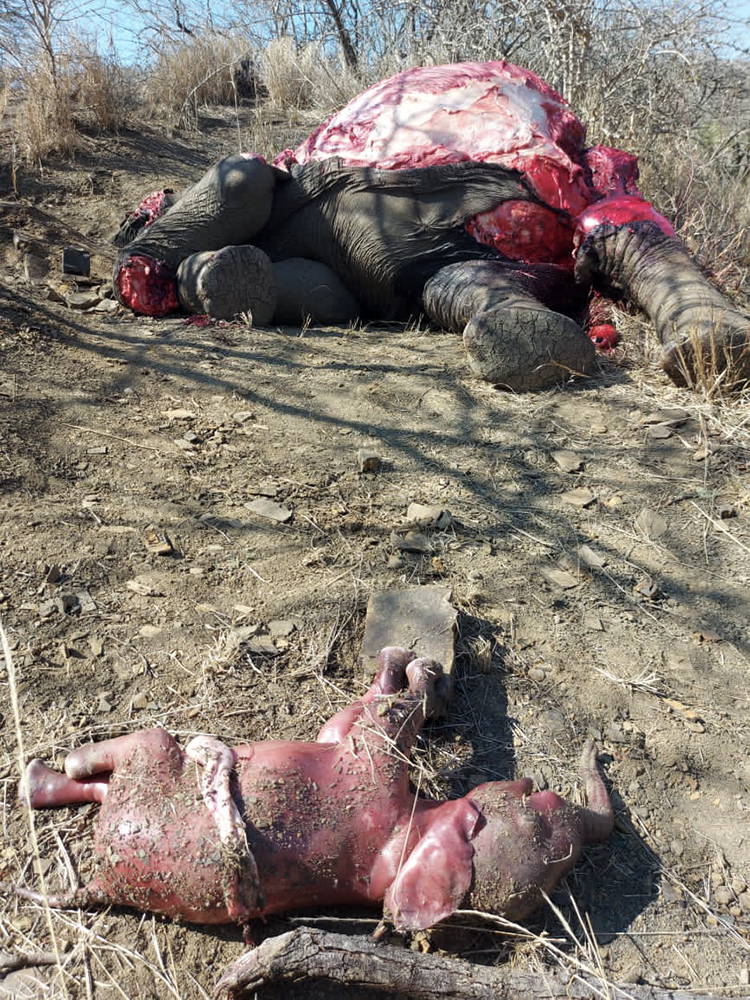
A community meeting held on August 24th, 2024, at the Stedham hall in Edubekeni district aimed to address issues of elephants entering communal lands. Thomas Mbedzi from the Dept of Environmental Affairs, National Government, clarified that only national authorities can approve a cull, which would take about a month to review. Mr Mbedzi emphasised that lethal measures are only permissible if human life is directly threatened and must be reported and justified.
The Mawana Elephants have been displaced due to vandalised fencing on the Vreesniet farm. This led to an incident on March 23rd, 2024, where an elephant in the Thaka Valley allegedly injured community member Lungelo Buthelezi.
NGOs, including the Human Elephant Foundation, have been tirelessly working to collar the elephants and repair fences to ensure safety, offering a glimmer of hope in this dire situation.
As a dedicated wildlife and environmental journalist, I am deeply troubled by the news of the culling order for the Mawana elephants. This news has deeply affected me, and at this time, it remains unclear who authorised this drastic action—whether it was a unilateral decision in KZN or a local authority initiative.
The slaughter of these nine elephants, which leaves the remaining herd vulnerable, has been condemned by wildlife protection groups. They are now seeking an urgent court interdict to safeguard the remaining elephants and address the legality of the culling order. The NGOs argue that using isolated incidents to justify the culling of an entire herd contradicts the principles outlined in South African wildlife protection laws.
“We don’t own the planet Earth, we belong to it. And we must share it with our wildlife.”
– Steve Irwin
Responses and Reactions.
In response to the culling, Ezemvelo KZN Wildlife has denied any illegal actions. They asserted that they had a permit to manage damage-causing animals and that the property owner requested the destruction of the elephants.
In a recent interview with East Coast Radio, Ezemvelo’s spokesperson, Musa Mntambo, stated that while they had not yet received the permit to destroy the roaming elephants, the slaughtering occurred within Mr. Sithole’s property to address the damage caused.
Meanwhile, Wildlife protection organisations, including the Human Elephant Foundation, have condemned the culling and are seeking an urgent court interdict to safeguard the remaining elephants. These groups argue that using isolated incidents to justify the culling of an entire herd contradicts South African wildlife protection laws and the principles of ethical wildlife management.
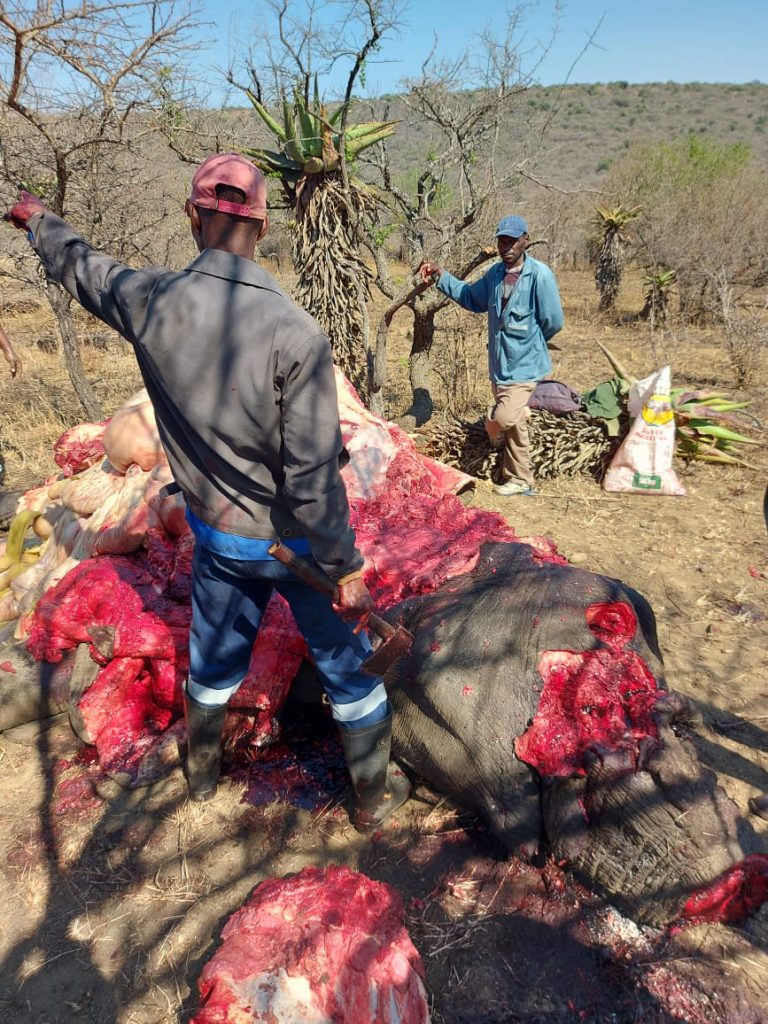
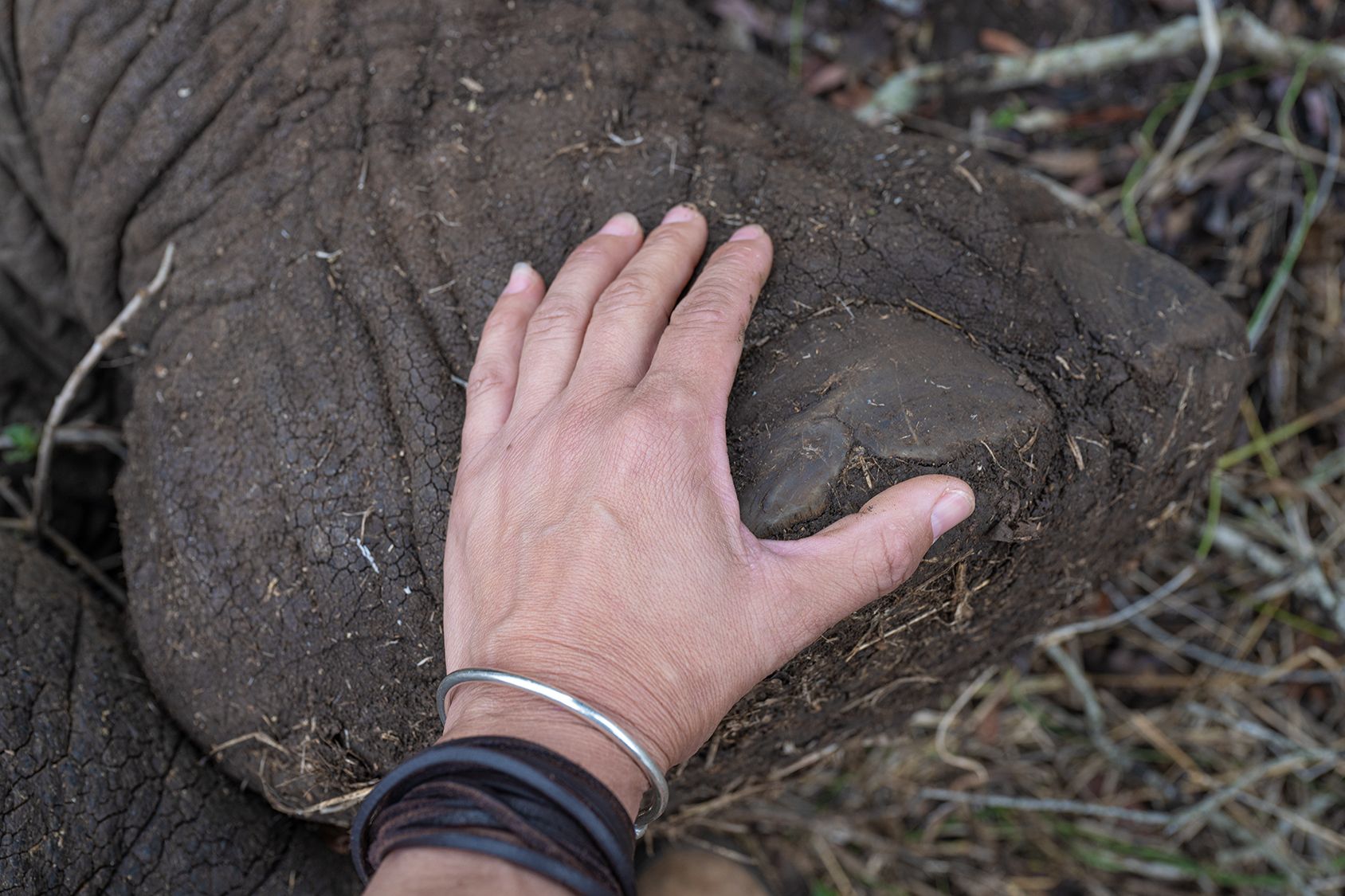
The Impact of Culling on Elephant Behaviour and Social Structure—Interview with PhD candidate Vesta Eleuteri.
Vesta Eleuteri is a biologist studying animal social cognition and communication. Vesta’s research focuses on understanding the complexity and flexibility of animal communication, using chimpanzees and elephants as her primary subjects.
Her early work explored the acoustic variations in chimpanzee drumming for long-distance and short-distance communication. Now, as a PhD candidate at the University of Vienna, she is investigating multimodal communication in African savannah elephants. Her PhD project seeks to understand how elephants communicate with gestures and how they combine them with vocalisations and aims to create a first lexicon of elephant intentional gestures and their meanings. With field experience across Southern Africa and Uganda, Vesta’s work combines academic rigour with on-the-ground conservation efforts to shed light on the intricate forms of communication that bridge species boundaries.
The interview with Vesta provides insights into the impact of the recent culling of the Mawana elephant population on their behaviour and social structure.
Diving straight into the interview, I asked Vesta to describe how family dynamics and social bonds are affected when a significant number of herd members are killed.
“Female elephants live in family groups of related females and their offspring. Each family group has an experienced older female leading the group called “matriarch”. Family members typically roam together and stay close to one another,” explains Vesta.
“Some families form strong bonds and often roam together, forming so-called “bond groups”. Individuals who are part of family or bond groups have very strong, long-lasting relationships. You can imagine that when some of them are killed they experience immense trauma and havoc in the group.
Some families can split when their matriarch or older individuals are killed because they lose their “guide”. Young orphans are often left behind and they may be adopted and taken care of by other family members but sometimes, if too young, don’t make it without their mothers.
The stress and impact of killing of family members on their social relationships have led to changes in culling practices and to a general halt of this practice and use as a “last resort”.
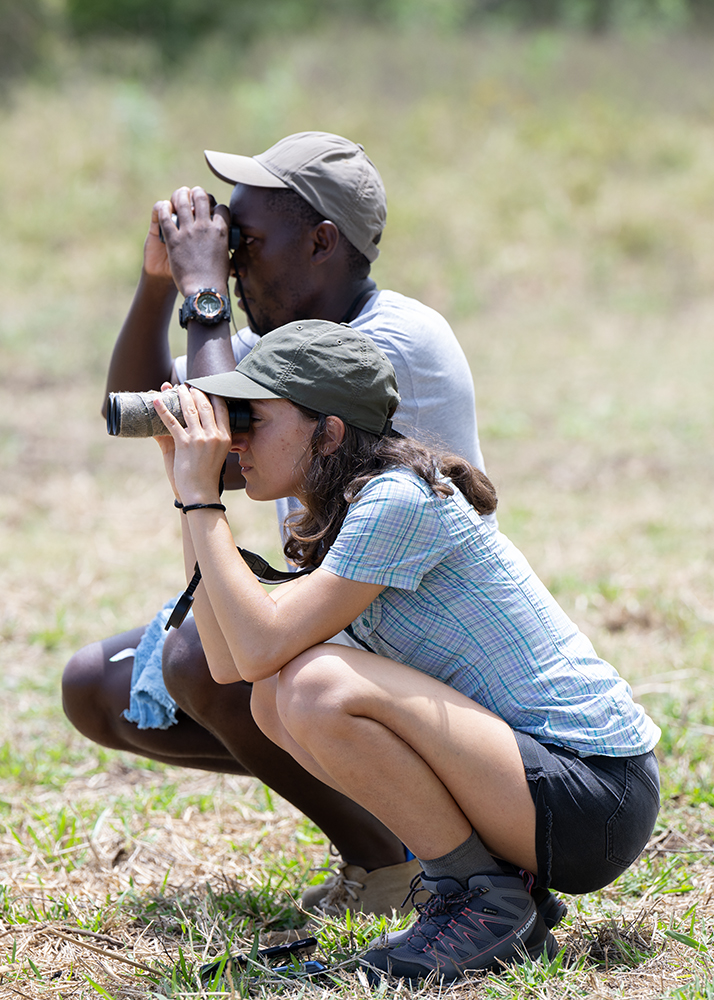
“Today, culling targets whole family groups so that every individual can be killed, leaving no stressed individual behind. However, individuals often escape, and this doesn’t take into account the bond groups and other long-lasting social relationships elephants form in their long lives, which are also heavily impacted. One study comparing two populations, one comprising elephants who experienced culling and one where elephants were never culled, showed strong long-term impacts of culling on elephant social behaviour. The elephants who experienced culling were less able to discriminate calls from friends or strangers and were also unable to distinguish callers from different age groups. This highlights the massive impact of killing crucial older individuals on the population’s social structure and behaviour.”
“Do elephants exhibit any behavioural changes when exposed to repeated human threats, such as poaching?” I asked.
“Elephants are deeply emotional and empathetic beings. They show increased fear of humans and, consequently, increased aggressiveness when killed by them. This leads to a higher risk of being attacked by an elephant and more deadly encounters between humans and elephants.”
“Could the trauma from witnessing such events affect the remaining herd’s ability to function normally?”
“Elephants are very social beings and depend on the knowledge and experience of their matriarch and older individuals to succeed in finding resources such as water or food sources. Matriarchs are also “repositories of social knowledge”, knowing a network of different individuals and how to react in the presence of known and unknown individuals. When these older individuals are killed the group loses crucial knowledge to locate resources affecting their survival, and they lose social knowledge impacting their reproductive success and social behaviour. “
“Given your knowledge of elephant communication, what kind of stress signals might have been exchanged among the herd during the recent slaughter in KwaZulu-Natal?”
“The elephants probably started running away, and when they found no escape, they probably started bunching together to protect the younger ones from the shooting done by the helicopter. Older individuals might have charged the helicopter to protect the group. They probably emitted vocalisations produced during high-arousal situations, like trumpets and loud screams. They may also have used their rumbles to find and gather each other. They will have had secretions from temporal glands, a gland unique to elephants that secretes a sticky substance when elephants are stressed. They may have also reached out to touch younger individuals in distress to calm them,” said Vesta.
Before the interview, I provided Vesta with a factual history and timeline of the Mawana Elephants so she could have a better understanding of this particular herd..
“Could the sudden loss of nine elephants in one area impact the communication or migratory patterns of nearby herds?” I asked.
“Elephants communicate over large distances using rumble calls. Rumbles can reach up to 10 km away and elephants are able to identify who is calling from 2.5 km away. If other elephants were nearby when the shooting happened and could hear them, they would have probably heard the shots and the stress in the calls of the individuals and have moved away from the danger. I experienced and heard of other people experiencing elephants disappearing following traumatic events like culling or translocations, meaning that they communicate or hear each other during these stressful situations and move away from the area where it happened.”
“In your opinion, what are the long-term psychological impacts on elephants who survive such traumatic events?”
“Elephants show signs of post-traumatic disorder following traumatic events like poaching and other forms of human killing. They might show increased alertness and fear in the presence of humans and, as a consequence, may be even more aggressive towards humans. There is also evidence that stressful events impair decision-making in elephants. There is an elephant population in the Gorongosa National Park (Mozambique) , where 90 % of the elephants were wiped out during the civil war between 1977–1992. Here, groups of elephants charge together when vehicles get to close to the herd, rather than running away from them, and it seems this behaviour is culturally transmitted to younger elephants. This shows how much elephants can be affected, even in the long term, by traumatic events.”
“Elephants are known to mourn their dead. How might the surviving herd react in the aftermath of this specific tragedy?”
“Elephants are one of the few species known to mourn their dead. They often stay where their relatives died for days and weeks, and sometimes come back to these sites months later. They constantly touch and investigate with their trunks the bodies or bones of dead individuals streaming from temporal glands (a sign of distress) shortly after their death. There are also reports of elephants covering the bodies of dead elephants or even injured humans with vegetation. We don’t really know why they do this.
In the case of the Mawana Elephants, the group killed was in Mr Sithole’s Vreesniet farm, and the rest of the herd will have probably first run away to save themselves and their offspring. What we know is that they came back after the killing and gathered around the corpses of their herd mates to protect them, not letting anyone, especially humans, nearby.
I once witnessed in another park all the elephants gathering around a dead female for weeks and protecting the corpse from the hyenas. Mawana herd will do the same.”
Listening to Vesta’s professional feedback and the devastating impact of these brutal killings is heart-wrenching. Her words carry the weight of profound loss, and the anguish in both our voices during the interview underlines the horrifying reality of this violence.
It’s not just the facts of the atrocities that are overwhelming, but the personal toll it has taken on both of us and everyone in wildlife conservation — a stark reminder of the human cost behind the headlines.”
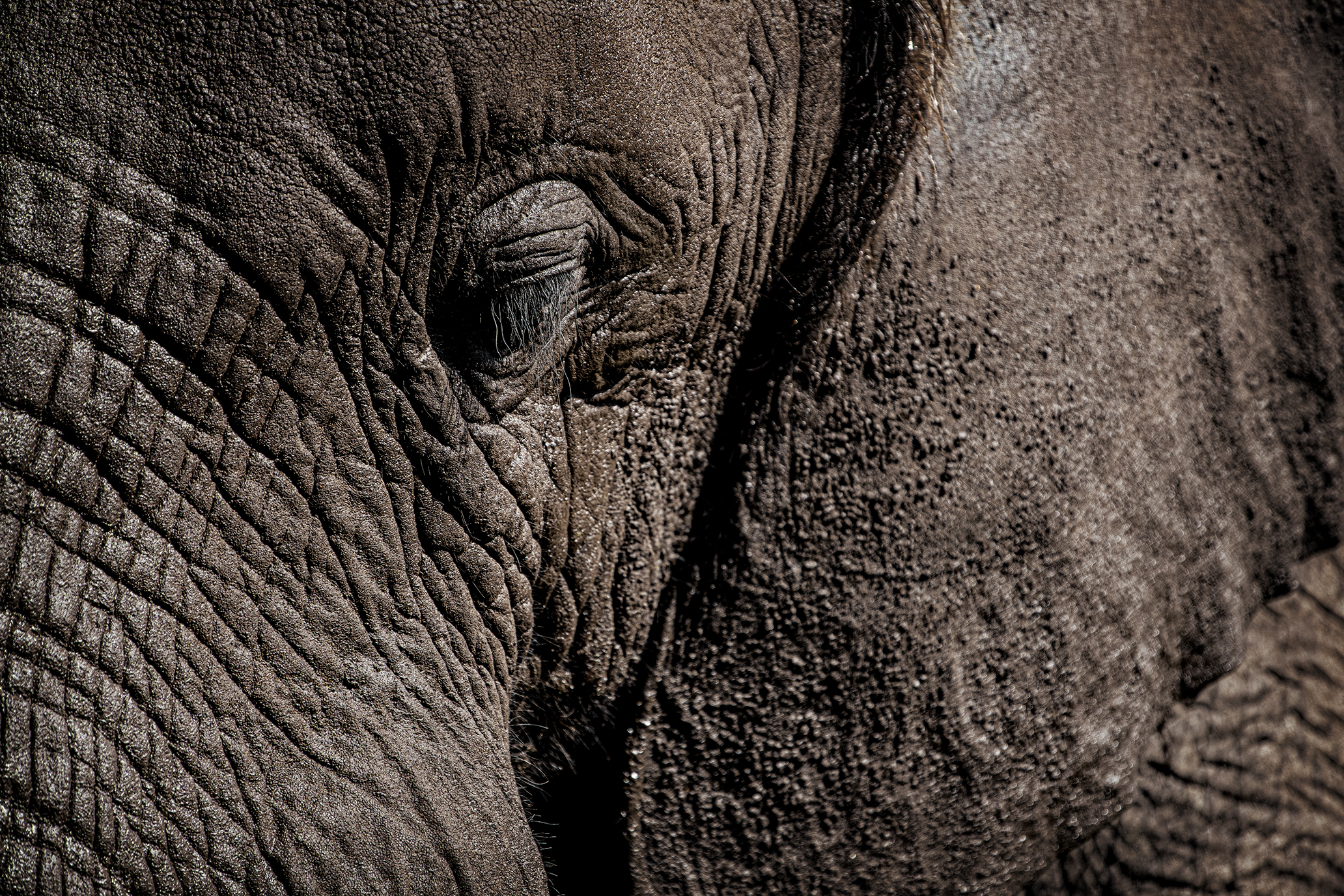
In an attempt to humanise the victims of the story — the Mawana Elephants — I asked, “How can an understanding of elephant communication and behaviour help conservationists prevent future tragedies like this?”
“Despite being far related to us in evolutionary history and very different in how they perceive the world, elephants are similar to us in many respects. We are learning more and more that elephants are highly intelligent animals showing complex cognitive abilities to a similar extent to nonhuman apes or cetaceans (dolphins, whales).
Elephants have sophisticated discrimination skills, being able to distinguish tribes that hunt them from those that don’t from their scent or voices alone (this is incredible!). They use a rich communication system to navigate their complex multi-level societies (some elephants can even invent new sounds, and some imitate human words!). They are highly empathetic towards one another, caring for each other and helping each other when in need. How can we not consider their similarity to us when we make decisions that can harm or cause distress to them? Specifically, by understanding how elephants normally behave and communicate when not harassed by humans, we can understand what represents a traumatic event for elephants and adjust our methods of managing them.
To some extent, this has already been done by stopping or modifying culling practices, but we still have a lot to learn. There is also a recent scientific paper proposing this new “One wellbeing approach” when managing elephants that considers different elephant management practices (e.g., translocation, contraception, culling, resource restriction) by taking into account their (positive or negative) effects on the habitat, on the wellbeing of the elephants, and the wellbeing of humans. I think it is crucial to take this holistic approach when making management decisions.”
To wrap up the interview, I asked: “What steps do you believe are necessary to protect elephant populations in regions like KwaZulu-Natal, where poaching and human-elephant conflict remain high?”
“I think most conservationists agree that the main reason elephants are considered a “problem” in southern Africa is the lack of sufficient space available to them, “ said Vesta.
“Elephants are a migratory species, and they are “habitat’s engineers” playing a crucial role in the environment they live in by, for example, shaping landscapes and dispersing seeds. But, when confined to fenced or fragmented spaces, their densities can grow to unsustainable numbers, and they can harm the environment.
I think the only real long-term solution is creating more space, where possible, and safeguarding and linking their available space. Many people, like Grant Fowlds, are making their lifelong commitment to do exactly this. We also need to help mitigate human-elephant conflict, for example, by tracking elephants’ movements to understand who is entering settlements and how we can know this ahead of time so that locals can be prepared and react appropriately. We need to offer to local deterrents like bee hives and chilli fences, which have proven to be highly successful in countries like Kenya and Tanzania.
If those who can have their whole livelihood endangered by elephants can feel safe and even benefit from the presence of elephants, for example, through ecotourism, conflict and even poaching can be reduced, and we can better protect elephants.
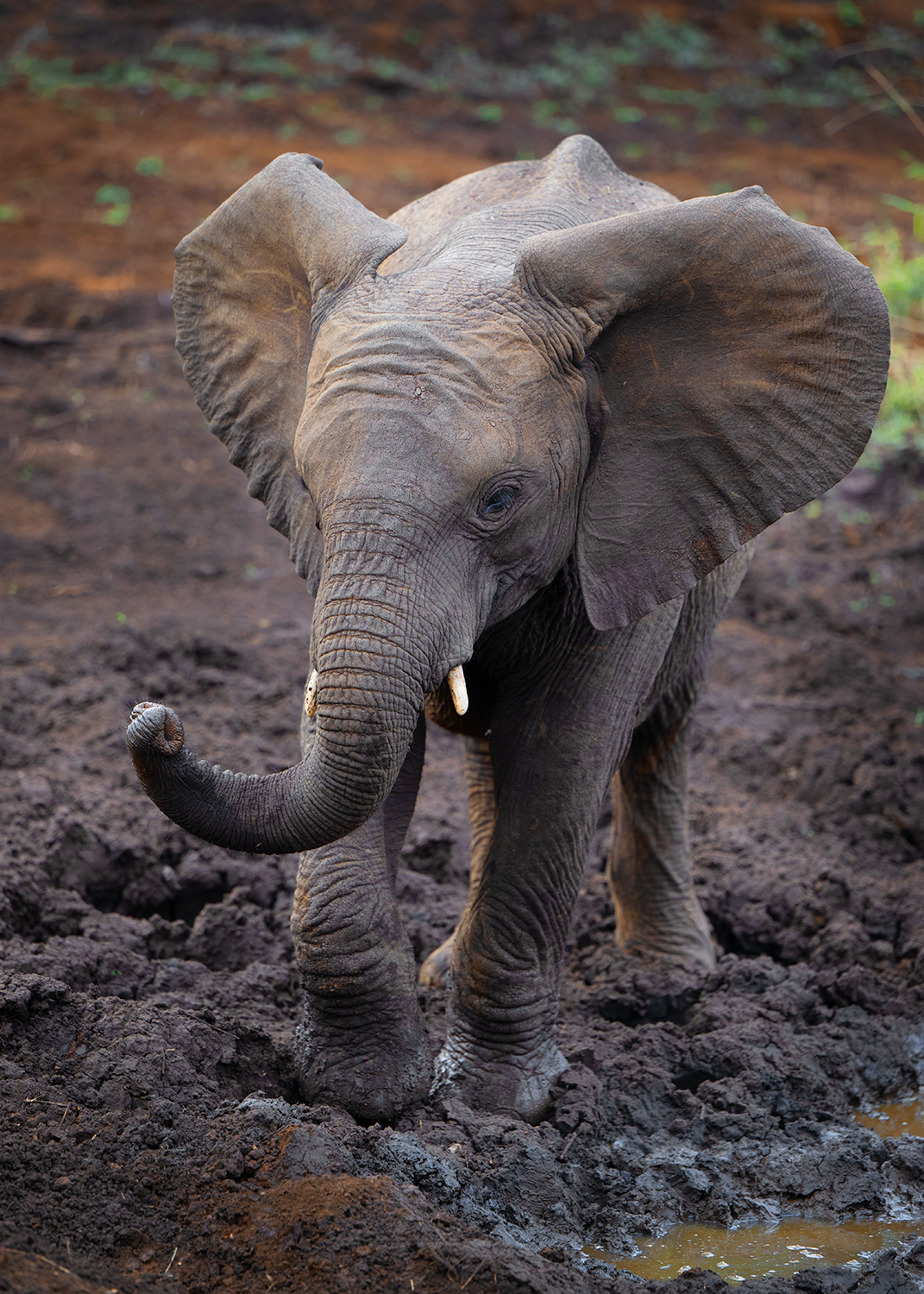
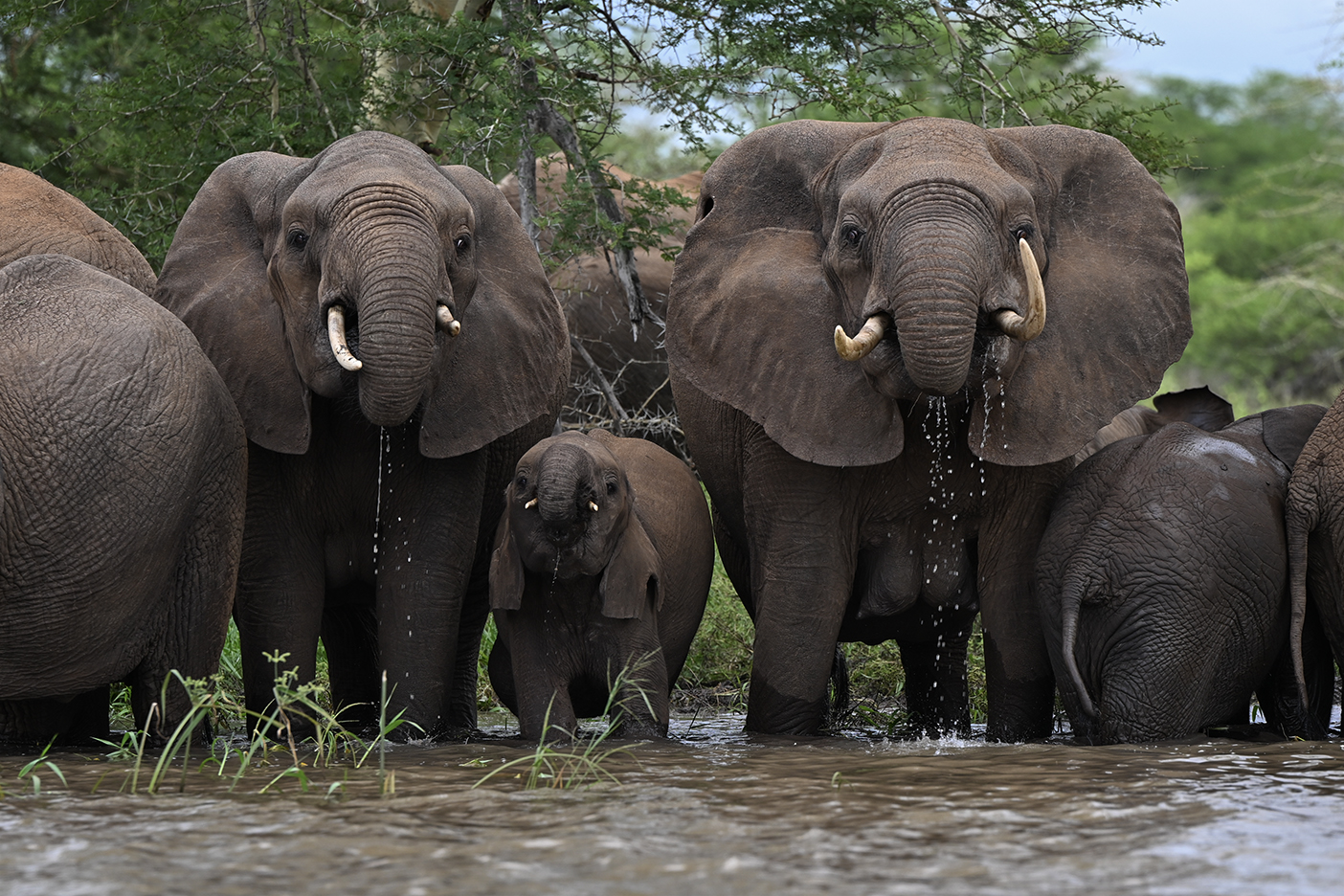
The Mawana Elephants —A Timeline of Conflict and Conservation
In June 2003, the journey of the Mawana elephants [ as they are known in the area] began when Kerneels Van der Walt introduced 12 elephants from Phinda to the Mawana Game Reserve. This initial translocation aimed to bolster the population of elephants in the area, enhance ecological balance, and ensure the species’ survival in a new habitat.
For years, the elephants seemed to be doing well, but unfortunately, the peace did not last.
During 2015 and 2016, seven bull elephants from the Mawana herd were shot —some were shot on Spoor Safaris’ property as well as on Mawana Game Reserve. These incidents on both Mawana and Spoor underscored the rising tensions between human activities and wildlife.
In November 2016, the Loziba Wildlife Reserve founders visited the Van der Walt family for the first time. This meeting marked the beginning of a closer examination and intervention into the fate of these elephants.
By December 2016, the situation was further examined closely when wildlife experts Jason Fisher and Kester Vickery flew over Mawana to conduct an aerial survey. They identified three family groups within the herd, totalling 24 elephants. This count was crucial in understanding the herd’s structure and dynamics.
Conservation Efforts and Challenges
In January 2017, a significant development took place as consultants David Peddie, Lawyer Peter Rutsch, and Bruce Page engaged in several critical meetings with the MEC, Dr. Mkhize, and Una Coetzee. These discussions centred on the challenges faced by the elephants and potential solutions to ensure their survival.
Later the same year, advances in tracking and monitoring were made with the introduction of collars equipped with ERP (Elephant/Rhino/People) technology, sponsored by a USA team of SAP Vets, Dave Cooper. This initiative aimed to improve the understanding of the elephants’ movements and enhance their protection.
In 2019, The Loziba Wilderness was officially established following the signing of the Thaka Valley Constitution. This marked a formal commitment to the conservation and protection of the elephants and their habitat.
The ongoing efforts to monitor and manage the herd continued with the collaring of a male elephant, facilitated by Dr. Trevor Viljoen from Nkombe Rhino and Savukatel. This procedure aimed to provide further insights into the elephant’s behaviour and movements.
Tragedy Strikes
On February 18th, 2020: a tragic event occurred when Beyers Coetzee, an advocate for wildlife conservation, was trampled by a bull elephant while attempting to use thunder flashes to drive the herd away from Sithole Farm. This incident highlighted the escalating tensions and the dangers faced by those working in close proximity to these large and sometimes unpredictable animals.
In September 2022, under pressure from persistent human-elephant conflicts, a reluctant agreement was reached to destroy a bull elephant that constantly threatened villagers and crops. The bull had developed a dangerous fearlessness towards humans, necessitating this drastic measure.
2024.
Earlier this year, tensions escalated when an elephant in Thaka Valley allegedly attacked and injured local herdsman Lungelo Buthelezi on March 23rd. The incident sent shockwaves through the community, culminating in a heated meeting held in March at Stedham Hall, Edubekeni district. Present at the meeting were representatives from Ezemvelo KZN Wildlife, three members of the Van der Walt family, and myself, attending as an international independent journalist.
The atmosphere in the hall was palpable with anger and frustration, as the discussion was conducted primarily in Zulu, with occasional translations into English. As emotions flared, community members demanded drastic measures: the complete elimination of elephants from the area. What stood out, however, was Ezemvelo’s lack of immediate objection to these calls, further intensifying the sense of unrest.
On August 31, 2024, the conflict reached a critical point when nine elephants from the Mawana herd were slaughtered on Mr. Sithole’s Vreesniet farm in Northern KwaZulu-Natal. This action was carried out without formal approval, contrary to South African regulations governing wildlife culling.
The slaughter has sparked outrage and legal challenges from the wildlife protection group.
“The story of the Mawana elephants is a devastating reminder of the complex interplay between wildlife conservation and human interests. These recent tragic events highlight the urgent need for balanced approaches considering the needs and welfare of elephants and local communities. As we navigate these challenges, it is crucial to learn from past experiences, embrace innovative solutions, and work towards a future where humans and wildlife can coexist harmoniously.”
*This is a developing story.
NEWS UPDATE!
Clarifying the facts of the Mawana Elephant Herd’s recent location and movements.
KwaCeza, KwaZulu-Natal – October 26th, 2024
Recent misinformation has emerged concerning the remaining Mawana Elephant Herd, a group of approximately 30 free-roaming elephants, which has raised unnecessary concerns in the KwaCeza community near Ulundi district.
Reports following a statement by Ezemvelo KZN Wildlife spokesperson Vuyiswa Radebe and broadcasted by Newzroom Afrika have alleged that these elephants escaped from their enclosure, caused residents to flee, and roamed into populated areas. As an investigative journalist, Leticia Cox/ LensTraveller, on behalf of a local NGO actively involved in elephant conservation and community support, seeks to clarify the actual events.
Misstatements and Facts Surrounding the Mawana Elephants:
1. Free-Roaming Status of the Mawana Elephants
The claim that the elephants “broke free from an enclosure” on October 22nd is categorically false. The Mawana herd has roamed freely for several years, interacting with the landscape and navigating areas around private landholdings in KwaZulu-Natal.
Keeping the Mawana Elephants within any fenced area has proven challenging due to ongoing fence-cutting and destruction.
2. Elephant Movement and Current Location
Mrs Radebe’s statement that the elephants were “roaming the streets of Ulundi” misrepresents the reality. The herd has been consistently located within the Black Imfolozi Valley area and has not entered Ulundi at any point.
The claim that these elephants posed an immediate threat to populated areas is misleading. The herd has primarily stayed on Mr Sithole’s private property in Vreesniet.
3. Incident in Thaka Valley, March 23rd
An isolated incident involving a young herdsman, Lungelo Buthelezi, who sustained injuries in Thaka Valley in March, has been misinterpreted as evidence of a threat posed by the Mawana elephants. Thaka Valley is far from the current grazing areas, and it is widely believed that the elephant involved, likely a lone bull, felt threatened by Buthelezi’s dog. This incident does not reflect the overall behaviour of the herd, which has peacefully coexisted with local residents and exhibits no “killer” tendencies.
4. The Tragic Events of August 31st
It is critical to highlight that nine of the Mawana elephants were unlawfully culled by Ezemvelo KZN Wildlife in the Vreesniet area on August 31st. This incident, a grim reminder of the challenges of wildlife protection, has spurred the local NGOs to monitor and protect the remaining elephants.
5. Elephant Relocation Efforts
Following the sighting on October 22nd, a drone was used to relocate the elephants safely. This strategic effort redirected the herd to a dense bush area, away from populated locations. The following day, an NGO-sponsored helicopter further guided the herd into a secure location away from community areas.
6. Community Safety and Incident Response
Statements alleging that the presence of the elephants incited fear among residents are unfounded. According to sources within the community, the elephants displayed no aggressive or threatening behaviour during this recent event. The claim that community members “fled their homes” is inaccurate; no immediate danger prompted such an action.
7. Clarification on Management and Responsibility
Ezemvelo KZN Wildlife has shifted the responsibility of these elephants onto its organisation following alleged non-compliance from Mawana, the herd’s original owners. However, local NGOs have taken the lead in monitoring and securing the elephants, working diligently to ensure the herd remains in safe, designated areas—and it is not solely the efforts of Ezemvelo that have sustained the ongoing oversight of these elephants, as Mrs Radebe stated in her interviews with the media.
*This recent misinformation underscores the urgent need for accurate representation of wildlife issues. Local NGOs and concerned stakeholders are committed to collaborating with communities and advocating for reinforced protective measures, including educating the community/ public and removing harmful myths that lead to unnecessary fear or escalated conflict.
This press release aims to provide an honest and transparent account of the situation and to encourage constructive dialogue that fosters community welfare and the preservation of the Mawana Elephant Herd.
For more information please contact:
Leticia Cox / LensTraveller
Investigative Journalist
Email: info@lenstraveller.net
WhatsApp: +27765035329
Subject: MAWANA ELEPHANTS CRISIS
Join LensTraveller On A Journey Of Discovery. Stay updated with the latest travel adventures, inspirations and insights.
*By subscribing you agree to our Terms &Conditions and Privacy & Cookies Policy.
















